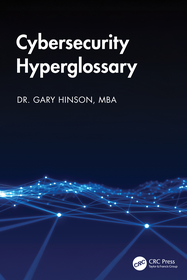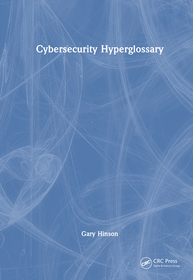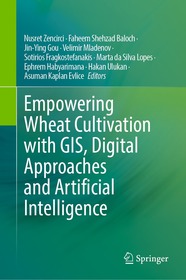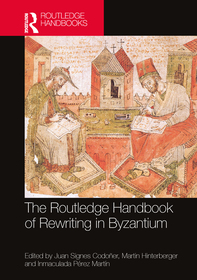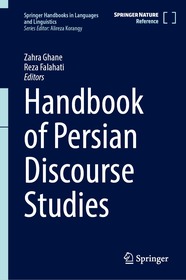
Handbook of Persian Discourse Studies
Series: Springer Handbooks in Languages and Linguistics;
- Publisher's listprice EUR 320.99
-
133 130 Ft (126 791 Ft + 5% VAT)
The price is estimated because at the time of ordering we do not know what conversion rates will apply to HUF / product currency when the book arrives. In case HUF is weaker, the price increases slightly, in case HUF is stronger, the price goes lower slightly.
- Discount 12% (cc. 15 976 Ft off)
- Discounted price 117 155 Ft (111 576 Ft + 5% VAT)
Subcribe now and take benefit of a favourable price.
Subscribe
133 130 Ft

Availability
Not yet published.
Why don't you give exact delivery time?
Delivery time is estimated on our previous experiences. We give estimations only, because we order from outside Hungary, and the delivery time mainly depends on how quickly the publisher supplies the book. Faster or slower deliveries both happen, but we do our best to supply as quickly as possible.
Product details:
- Publisher Springer Nature Singapore
- Date of Publication 26 November 2025
- Number of Volumes 1 pieces, Book
- ISBN 9789819503803
- Binding Hardback
- No. of pages702 pages
- Size 235x155 mm
- Language English
- Illustrations XL, 702 p. 62 illus., 47 illus. in color. 700
Categories
Long description:
This book is the first of its kind to provide a comprehensive engagement with Persian discourse analysis in the Western hemisphere, addressing the shadowy borders that exist between culture, language, linguistics, and historicity, which are often overlooked in cultural linguistics and pragmatics more broadly. The theoretical foundations of this book are deeply rooted in culture, mannerism, language (both official and idiomatic), and pragmatics of language use. The first section sets the theoretical foundation with a thorough overview of critical discourse analysis and the application of this theory in analyzing speech, text and emotions. The subsequent four sections conduct investigations into a wide array of genres, namely academic contexts, politics, media, literature and music, respectively and describe the relevant corpora with their specific components from the viewpoints of terminology and lexicography. The sixth section looks at discourse and translation, offering an in-depth excavation of discourse-analytical frameworks applicable to translation studies. The seventh demarcates discourse and educational settings unpacking what discourse analysis can do to inform teachers and students. The section on identity and globalization explores these concepts as defined by linguistic approaches. The second last section on discourse markers tackles language, meaning, and context, and employs ‘discourse marker’ as an umbrella term for linguistic devices that signal communicative intention, categorizing them and their functions in Persian conversational and language learning contexts. The final part of the work looks at discourse and its interface with pragmatics, grammar and/or intonation, defining grammatical and intonational constructions as a form-meaning pair so as to illustrate how they can be utilized to signal different functions. Relevant to cultural and theoretical linguistics, and specialists in Persian language studies, specifically, this one-stop text is a sweeping compendium to Persian discourse studies.
This book is the first of its kind to provide a comprehensive engagement with Persian discourse analysis in the Western hemisphere, addressing the shadowy borders that exist between culture, language, linguistics, and historicity, which are often overlooked in cultural linguistics and pragmatics more broadly. The theoretical foundations of this book are deeply rooted in culture, mannerism, language (both official and idiomatic), and pragmatics of language use. The first section sets the theoretical foundation with a thorough overview of critical discourse analysis and the application of this theory in analyzing speech, text and emotions. The subsequent four sections conduct investigations into a wide array of genres, namely academic contexts, politics, media, literature and music, respectively and describe the relevant corpora with their specific components from the viewpoints of terminology and lexicography. The sixth section looks at discourse and translation, offering an in-depth excavation of discourse-analytical frameworks applicable to translation studies. The seventh demarcates discourse and educational settings unpacking what discourse analysis can do to inform teachers and students. The section on identity and globalization explores these concepts as defined by linguistic approaches. The second last section on discourse markers tackles language, meaning, and context, and employs ‘discourse marker’ as an umbrella term for linguistic devices that signal communicative intention, categorizing them and their functions in Persian conversational and language learning contexts. The final part of the work looks at discourse and its interface with pragmatics, grammar and/or intonation, defining grammatical and intonational constructions as a form-meaning pair so as to illustrate how they can be utilized to signal different functions. Relevant to cultural and theoretical linguistics, and specialists in Persian language studies, specifically, this one-stop text is a sweeping compendium to Persian discourse studies. MoreTable of Contents:
Critical Discourse Analysis (CDA).- Cognitive Discourse Analysis.- Corpus-based discourse analysis.- Discourse and pragmatics.- Interdisciplinarity & Transdisciplinarity.- Social and political applications.
More



